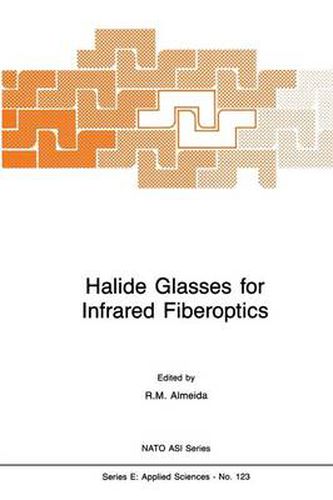Readings Newsletter
Become a Readings Member to make your shopping experience even easier.
Sign in or sign up for free!
You’re not far away from qualifying for FREE standard shipping within Australia
You’ve qualified for FREE standard shipping within Australia
The cart is loading…






This title is printed to order. This book may have been self-published. If so, we cannot guarantee the quality of the content. In the main most books will have gone through the editing process however some may not. We therefore suggest that you be aware of this before ordering this book. If in doubt check either the author or publisher’s details as we are unable to accept any returns unless they are faulty. Please contact us if you have any questions.
The field of heavy metal halide glasses (namely fluorides) is only ten years old now, but it has developed rapidly since the discovery of fluorozirconate glasses by the group at the University of Rennes (France). The main reason for this was the early demonstration of the enormous potential of such glasses for use as long-haul ultra-low loss middle infrared waveguide materials, aided in part by the scientific interest held by their unusual short range structures. As a result, significant research efforts were initiated in the academic, government and industrial sectors in Europe, the United States and Japan. However, the search for a finished product has per haps led to a partial overlooking of some of the more funda mental aspects by the scientific community. After the initial excitement, the workers in this field are perhaps at a crossroads where attenuations lower than 1 dB/Km need to be obtained for long lengths of fiber of good chemical and thermal stability, in order to guarantee continual R&D sUE ports. Therefore, there is a strong need for a critical asses sment of the potential of halide glasses for infrared fiber optics and the formulation of recommendations for future re search in this area and other related fields.
$9.00 standard shipping within Australia
FREE standard shipping within Australia for orders over $100.00
Express & International shipping calculated at checkout
This title is printed to order. This book may have been self-published. If so, we cannot guarantee the quality of the content. In the main most books will have gone through the editing process however some may not. We therefore suggest that you be aware of this before ordering this book. If in doubt check either the author or publisher’s details as we are unable to accept any returns unless they are faulty. Please contact us if you have any questions.
The field of heavy metal halide glasses (namely fluorides) is only ten years old now, but it has developed rapidly since the discovery of fluorozirconate glasses by the group at the University of Rennes (France). The main reason for this was the early demonstration of the enormous potential of such glasses for use as long-haul ultra-low loss middle infrared waveguide materials, aided in part by the scientific interest held by their unusual short range structures. As a result, significant research efforts were initiated in the academic, government and industrial sectors in Europe, the United States and Japan. However, the search for a finished product has per haps led to a partial overlooking of some of the more funda mental aspects by the scientific community. After the initial excitement, the workers in this field are perhaps at a crossroads where attenuations lower than 1 dB/Km need to be obtained for long lengths of fiber of good chemical and thermal stability, in order to guarantee continual R&D sUE ports. Therefore, there is a strong need for a critical asses sment of the potential of halide glasses for infrared fiber optics and the formulation of recommendations for future re search in this area and other related fields.